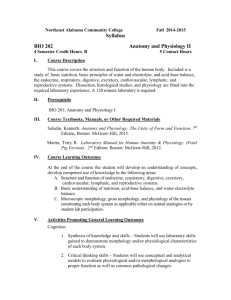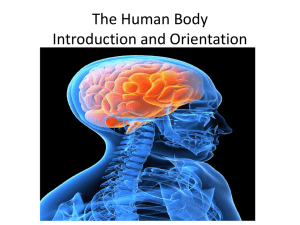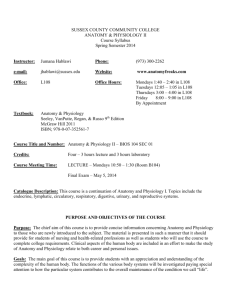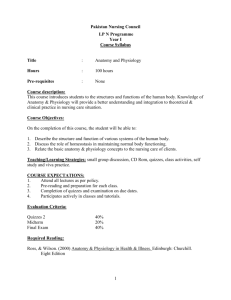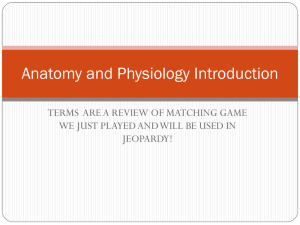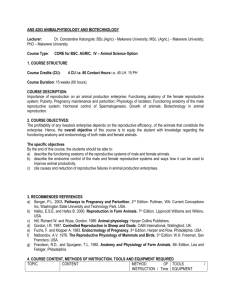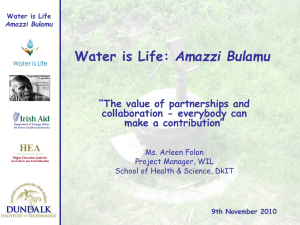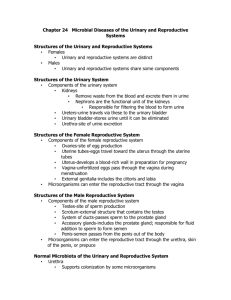FOM 2112 REPRODUCTIVE AND URINARY SYSTEMS
advertisement
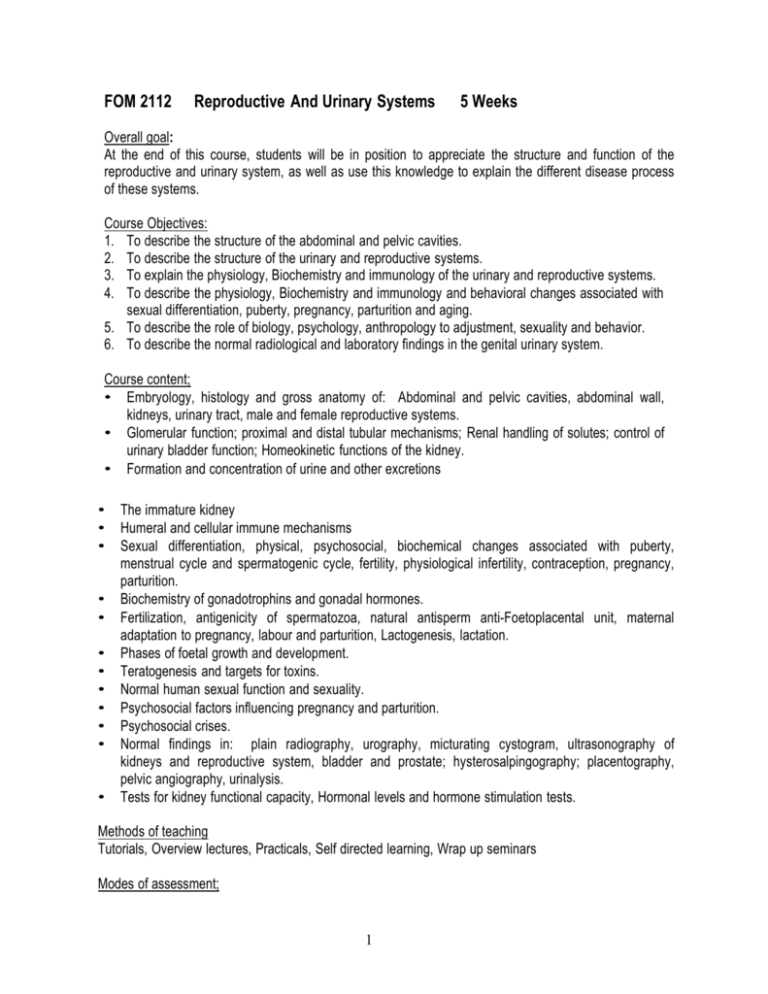
FOM 2112 Reproductive And Urinary Systems 5 Weeks Overall goal: At the end of this course, students will be in position to appreciate the structure and function of the reproductive and urinary system, as well as use this knowledge to explain the different disease process of these systems. Course Objectives: 1. To describe the structure of the abdominal and pelvic cavities. 2. To describe the structure of the urinary and reproductive systems. 3. To explain the physiology, Biochemistry and immunology of the urinary and reproductive systems. 4. To describe the physiology, Biochemistry and immunology and behavioral changes associated with sexual differentiation, puberty, pregnancy, parturition and aging. 5. To describe the role of biology, psychology, anthropology to adjustment, sexuality and behavior. 6. To describe the normal radiological and laboratory findings in the genital urinary system. Course content; • Embryology, histology and gross anatomy of: Abdominal and pelvic cavities, abdominal wall, kidneys, urinary tract, male and female reproductive systems. • Glomerular function; proximal and distal tubular mechanisms; Renal handling of solutes; control of urinary bladder function; Homeokinetic functions of the kidney. • Formation and concentration of urine and other excretions • • • • • • • • • • • • The immature kidney Humeral and cellular immune mechanisms Sexual differentiation, physical, psychosocial, biochemical changes associated with puberty, menstrual cycle and spermatogenic cycle, fertility, physiological infertility, contraception, pregnancy, parturition. Biochemistry of gonadotrophins and gonadal hormones. Fertilization, antigenicity of spermatozoa, natural antisperm anti-Foetoplacental unit, maternal adaptation to pregnancy, labour and parturition, Lactogenesis, lactation. Phases of foetal growth and development. Teratogenesis and targets for toxins. Normal human sexual function and sexuality. Psychosocial factors influencing pregnancy and parturition. Psychosocial crises. Normal findings in: plain radiography, urography, micturating cystogram, ultrasonography of kidneys and reproductive system, bladder and prostate; hysterosalpingography; placentography, pelvic angiography, urinalysis. Tests for kidney functional capacity, Hormonal levels and hormone stimulation tests. Methods of teaching Tutorials, Overview lectures, Practicals, Self directed learning, Wrap up seminars Modes of assessment; 1 Continuous assessment, Progressive assessment test, Written exam, Steeple chase, Viva voceCourse duration: 5 weeks, 5Total credit units, 75Contact hours. Resources and infrastructure 1. Anatomy lecture theatre 2. Physiology lecture theatre 3. Davis lecture theater 4. Anatomy dissection laboratories 5. Physiology laboratories 6. Albert Cook library 7. Anatomy and physiology book banks 8. Medical school computer laboratories Teaching staff 1. Prof Nzarubara, MBchB, MMED(SUR) 2. Dr Kiryowa Haruna, BDS, MSc 3. Dr Buwembo William, BDS, MSc 4. Dr Okullo, MBchB, Msc 5. Mr Allan Lugajju, BSc, MSc MUK MUK MUK MUK MUK 2 full time full time full time full time full time

